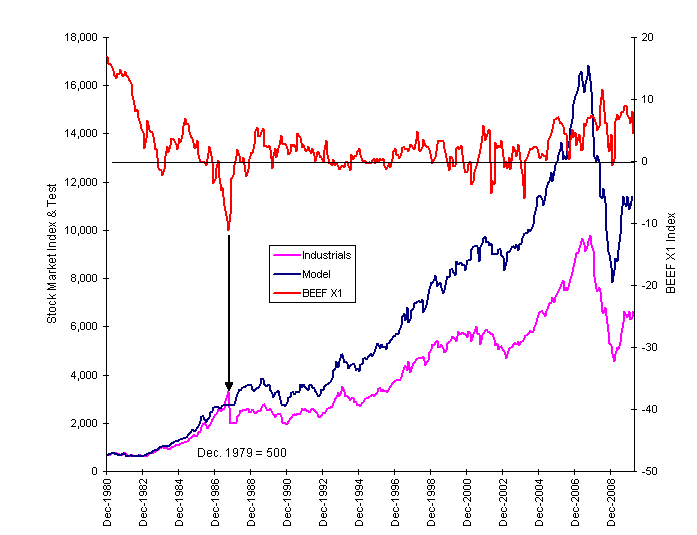Buoyant Economies
Stock market index of monetary pressure
One spin-off
from Buoyant Economies research in macro-economies is the Market Pressure X1 Index that is useful in predicting
the pressure on the Australian stock market.
It reflects the potential pressure on the Australian stock market
from new money entering the capital market.
The graph below shows the index and the Australian Stock Market
Industrials Index. The index is
derived from statistics in the Reserve Bank Bulletin which has a lag of
about two months. When money is
stimulating the market, the index is greater than zero.
When the index falls below the zero, the market is has a shortage
of money on the market.
The graph also shows the result of investing in the index and selling 2 months after the index falls to below -1.2. The test model returns to the market two months after the X1 index has risen relative to 3 months earlier. For the period since December 1980, the test index was 75% higher than the Industrials Index. The stock market crash of 1987 is clearly identified before the event as is the stock market slump in 2002. It indicates that there has been volatility in the money moving into the capital market and this has contributed to the volatility in the Australian stock market prices. In addition, events in the US stock market have overwhelmed the local market, resulting in a significant decline in the stock market. The growth of credit has fallen below the current account deficit line in the US. This is likely to result in a significant collapse of the US stock market: a "double dip". (See USA money and current account deficit.)
The Global Financial Crisis affected the Australian stock market before it affected the money supply. Hence, the Australian monetary position did not provide a warning of the impending decline. However, the decline in the gap between bank credit and the current account deficit is clearly evident in the US statistics. Changes to the published statistics used to prepare this table mean that it is no longer consistent with earlier data. Therefore, caution should be taken when trying to interpret this graph. At this time, the US data appears to be more significant to the Australian market than the Australian data.

Last Update: 2 May 2010 - for March data